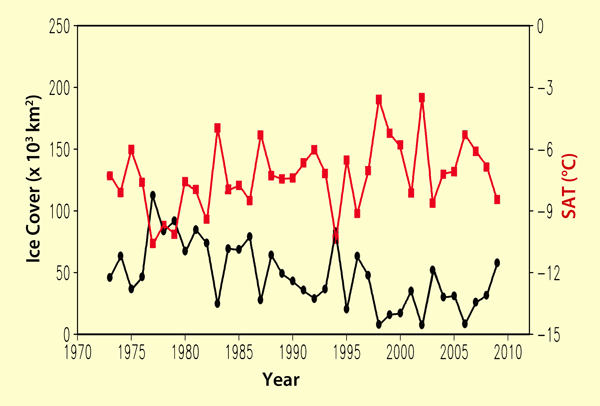Reference
Wang, J., Bai, X. and Leshkevich, G. 2010. Severe ice cover on Great Lakes during winter 2008-2009. EOS, Transactions, American Geophysical Union 91: 41-42.
What was done
For the period of time covering the winters of 1972-73 to 2008-09, the authors present and discuss, among other things, time series of annual average ice area and basin winter average surface air temperature (SAT) for the Great Lakes of North America, which they say "contain about 95% of the fresh surface water supply for the United States and 20% of the world."
What was learned
The primary data of interest are depicted in the figure below, where after an initial four years of relative warmth and lower annual average ice area, SATs declined and ice area rose. Then, there began a long period of somewhat jagged SAT rise and ice area decline, which both leveled out, in the mean, from about 1998 to 2006, whereupon SAT once again began to slowly decline and ice area began to slowly rise, with each parameter terminating at about the same value that it exhibited initially.

Figure 1. Annual average ice area of the North American Great Lakes and basin winter average surface air temperature (SAT) vs. time. Adapted from Wang et al. (2010).
What it means
Wang et al. conclude that "natural variability dominates Great Lakes ice cover," and that any trend in the data -- of which there are some of a few years and one that is more lengthy -- "is only useful for the period studied." Hence, there is no reason to attribute any change in the annual average ice area of the North American Great Lakes to anthropogenic global warming, especially when one considers the fact that there was no net warming over the period of time Wang et al. investigated. If anything, there was a slight cooling.




